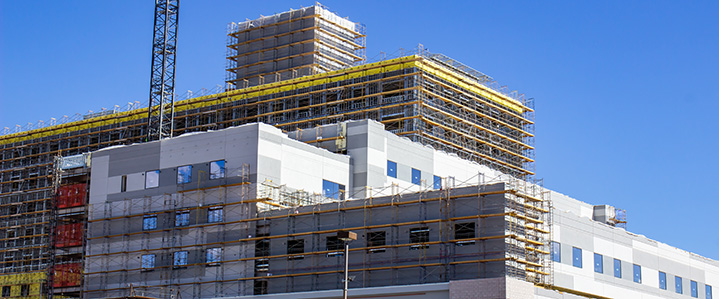Account for AAMI ST-108 in Your Hospital Water Management Plan

Most hospitals already have a water management plan for domestic water systems and infrastructure such as cooling towers, but a new standard from the Association for the Advancement of Medical Instrumentation (AAMI), AAMI ST-108, advises expanding such plans to cover the water used throughout the facility for reprocessing medical devices. The standard, published in August 2023, replaces and expands upon AAMI’s Technical Information Report (TIR) – 34.
While compliance with the national consensus standard is not currently required by most authorities having jurisdiction, accreditation bodies have made clear that they expect healthcare organizations to closely review AAMI ST-108 and other best practices to determine if they need to implement this new standard to address water-related risks in reprocessing. However, organizations can evaluate whether to pursue a full or partial adoption of the standard. A partial adoption involves selecting the standard element that best protects the patients while optimizing the immediate capital investment.
Water quality’s impact on healthcare-acquired infections
AAMI’s expert committee members developed this evidence-based guideline in response to repeated infection concerns around reprocessed medical devices. For example, one 2021 alert from the U.S. Food and Drug Administration reported that since 2017, the agency had received more than 450 reports attributing certain patient infections to contamination issues with cystoscopes, cystourethroscopes, and ureteroscopes alone.
By establishing minimum requirements for the water quality used at different stages of medical device processing, AAMI seeks to mitigate the potential for waterborne pathogens to infect patients and to prevent chemical and ionic compounds from impacting disinfectant properties; from causing corrosion, staining, or other damage to medical devices; or from causing direct harm to patients.
The standard lays out acceptable water quality parameters for three types of water: utility water used for point-of-use cleaning (POU) and post-wash rinsing of devices, critical water used for the final rinse, and steam. While many hospitals may have a process for the initial treatment of utility or more intensive treatment such as reverse osmosis (RO) to try to achieve critical water, they may not have one for testing this water to ensure it’s achieving AAMI’s water quality parameters. This is particularly true for decentralized locations where high-level device disinfection occurs.
Strategies for meeting AAMI ST-108
There are several areas where water quality can impact processed medical devices: in the equipment sterilization performed in the central sterile processing department and in the high-level disinfection performed, often by end users, at various locations across the hospital. With a baseline understanding of the water quality in these areas today, water management teams can recommend ways to enhance patient safety, if necessary.
As a performance-based standard, AAMI ST-108 sets acceptable parameters for water quality, but it does not provide a clear path on which treatment technology or processes achieve compliance with the water quality objectives. However, benchmarking water sampling is often a good first step for prioritizing the next steps. The AAMI standard lays out where to perform water sampling, advises on the frequency of sampling, and details the types of contaminants for which to sample.
Hospitals falling short of the guidelines today may need to invest in water treatment technology or increased system maintenance, or both. Of course, installing a new water treatment system to produce critical water can be expensive. As hospitals gather information around their baseline water conditions and set goals for what needs to be achieved, they may determine that they can prioritize implementation needs. For example, they may decide to target investments in the central processing department before installing water treatment at broader or decentralized instrument reprocessing locations. In this way, they can create a plan for moving forward on a timeline that works with their funding availability. Hospital teams may consider working with an environmental consultant experienced in conducting risk assessments to ensure that the prioritization maximizes the impact to protect patient safety.
This prioritization-based implementation may require additional consideration of steps that can mitigate patient risk in the short term. This is an area where an outside consultant can help develop a risk prevention strategy.
Broadening the water management team
Expanding the hospital water management plan to include the water used to process medical devices may mean bringing in more internal hospital stakeholders who can offer input on the plan. For example, infection prevention and control specialists can ensure that facilities managers understand how many areas the standard impacts. They can also help conduct risk assessments with reprocessing department personnel.
By serving as part of the water management team, infection control preventionists can also better understand what measures are being taken to work toward compliance and the reasons for the timeline. This broad team can also make a stronger argument to leadership around the need for specific resources, including technology investments.
For many hospitals, an environmental consultant may prove to be an essential member of the team. The professionals with EH&E can support water management teams in performing risk analysis, conducting sampling, and creating a plan to protect patients from the risks associated with proliferation of waterborne pathogens. EH&E has also worked with hospitals to optimize investments and protect patients by adopting select AAMI ST-108 elements for hospitals not yet looking to adopt the full standard. If you’re ready to strengthen your team, contact EH&E today.
Subscribe
to our blog
"*" indicates required fields





